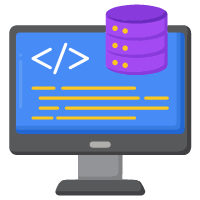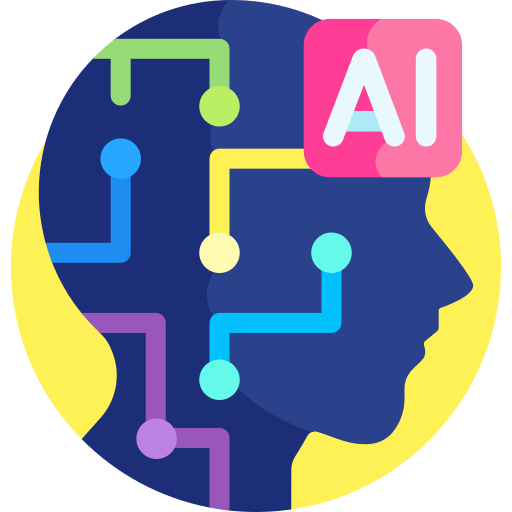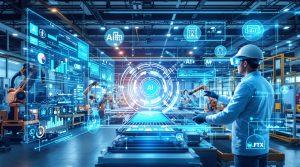Introduction
In the world of crafting and perfecting software, there’s a behind-the-scenes hero known as Application Lifecycle Management, or ALM for short. It’s like the whole journey a software takes, right from the idea stage to when it’s up and running. Think of it as a roadmap that guides how software is born, grows, and keeps getting better.
Now, something really cool is happening in this world of ALM. It’s like having an upgrade—a boost from something powerful and smart called Artificial Intelligence, or AI. You’ve probably heard about AI in movies or maybe with fancy gadgets, but it’s not just there. It’s stepping into the world of software, making things work smarter and faster.

Setting the Scene:
Picture this: Software Development used to follow a set of steps, almost like a recipe for baking a cake. But now, things are changing. The way software is created and taken care of is evolving fast, and AI is a big reason behind this change. It’s like adding a super-smart brain to the whole process.
Defining the Purpose
AI isn’t just a cool addition; it’s actually a game-changer. It’s making a big difference in two key areas of ALM: automated testing and predictive analysis. Now, what does that mean? Well, imagine having a robot that can test software without getting tired or missing anything. That’s what AI does in automated testing—it makes sure everything works just right. And then there’s predictive analysis. It’s like having a crystal ball that tells you what might go wrong in the future. AI helps in spotting problems before they even happen, which is pretty amazing.
So, in this blog, we’ll take a closer look at how AI is shaking things up in ALM, especially in these areas of testing and predicting. It’s not just about cool tech; it’s about making software better, faster, and more reliable.

The Importance of Testing in Software Development
Okay, imagine building a house without checking if the walls are strong or the roof doesn’t leak. That’s like making software without testing it first. Testing in software is like checking if everything works as it should, just like testing if all the buttons on a remote control work.
When software is being made, there are lots of bits and pieces that need to come together perfectly. Testing is what makes sure those bits work together without causing trouble. It’s like having a safety net, finding bugs or errors before they cause any real problems.
How AI Makes Testing Super Smart
Now, let’s talk about how AI jumps in to help with testing. Imagine if a robot could do all the testing work for you, but not just any robot—a super smart one. That’s what AI does in automated testing.

AI is like a genius assistant. It speeds up the testing process, making it way faster than if humans did it all. It’s like having a hundred pairs of eyes check the software, catching even the tiniest mistakes. Plus, it’s super accurate. It doesn’t get tired, so it won’t miss anything. And the best part? It reduces how much humans need to do, which means people can focus on more creative and important tasks.
AI in testing is like having a superhero that ensures the software is strong and ready to go without any hidden surprises—surprises that could cause some serious damage.
AI’s Impact on Deployment and Monitoring
Optimizing Deployment with AI
When software is ready to leave the workshop and head out into the world, it’s like sending a rocket to space; it needs to go smoothly without any hiccups. This step is called deployment, where the software is set up for everyone to use.
Now, here’s where AI steps in. It’s like having a super-efficient traffic controller. AI helps to make sure the software reaches its destination smoothly. It does this by optimizing the way the software is sent out, making sure it’s reliable and safe. It’s like having a trustworthy guide that minimizes mistakes, so when people start using the software, everything works just as it should.

Bolstering Monitoring with AI
Once the software is out there, it needs someone to keep an eye on it, right? That’s where monitoring comes in. Imagine having a super attentive guard watching over the software, making sure nothing strange happens.
AI plays this role perfectly. It’s like having a smart detective that spots anything unusual, like when something doesn’t seem right. It can find problems before they become big headaches. It’s all about being proactive—fixing things before they turn into a big mess. This way, AI helps in making sure the software keeps running smoothly, like a well-oiled machine.
AI Driven Predictive Analysis in ALM
The Significance of Predictive Analysis
Think of predictive analysis as being able to predict the weather before you step outside or knowing if your favorite team might win a game. In software development, it’s like having a crystal ball that tells you what might happen in the future with the software.
Why is this important? Well, just like how you’d want to know if it’s going to rain, software developers want to know if there might be problems ahead. Predictive analysis helps in seeing into the future of the software, spotting troubles before they even show up. It’s like having a heads-up so that fixing things becomes easier.

AI Enhanced Predictive Analysis
Now, let’s talk about how AI makes this crystal ball really smart. AI takes a bunch of information, like data about how the software works or how people use it, and turns it into predictions. It’s like having a really smart friend who looks at all the clues and tells you what might happen next.
With AI, predictive analysis becomes supercharged. It uses all this data to forecast things that might go wrong or trends that might come up. This way, software teams can prepare and fix things before they cause real trouble. It’s all about being ready for what’s coming.
Challenges in AI Adoption for ALM
When something new, like AI, comes along, there can be a few bumps on the road to making it work smoothly. In the world of ALM, where software is taken care of, using AI can sometimes bring some challenges.

Data Quality
One challenge is having good-quality information. It’s like needing clear pictures to spot things properly. AI needs the right kind of data to make good predictions and decisions. Sometimes, if the data isn’t good, AI might make mistakes or miss important stuff.

Implementation Complexities
Another challenge is making everything work together smoothly. It’s like having different puzzle pieces that need to fit perfectly. When AI is brought into ALM, it might need some adjustments to fit in with how things are already done. It can take time to make sure AI and the existing systems work hand in hand.

Skill Gaps
Imagine having a fancy tool but not knowing how to use it properly. That’s what skill gaps in AI can be like. Sometimes, people might not know how to work with AI or how to make the best use of it in ALM. It takes learning and training to get the most out of AI.
Advancements and Solutions in AI Integration for ALM
Now, let’s talk about how these challenges are being tackled.

Technological Advancements
Just like how phones get better with new updates, AI also keeps improving. There are constant advancements that make AI smarter and better at handling data. This helps in overcoming the challenge of data quality by making AI more adaptable.

Strategies for Mitigating Challenges
People are also finding ways to make AI and ALM work better together. It’s like finding new roads to make travel easier. There are strategies being developed to train people to use AI effectively, bridging the skill gaps. Also, experts are working on making AI systems more compatible with existing ALM setups, reducing the complexities of implementation.
Conclusion
Phew! We’ve taken quite a journey exploring how AI, that super-smart tech, is changing the game in ALM, the world where software is made and taken care of. Let’s wrap things up by taking a look back at what we’ve learned and what might come next.
AI’s Evolution in ALM
Think of AI’s journey in ALM like watching a caterpillar turn into a butterfly. It started as this exciting new thing, and now it’s become a real game-changer. From making testing faster and smarter to predicting issues before they even show up, AI has been a real hero in ALM.

The Future Trajectory of AI in ALM
What’s next for AI in ALM? Well, it’s like looking at a road that’s still being built. There’s so much more to explore! AI is likely to get even smarter, helping out more in testing, predicting, and making software even better. It might become more like a trusted partner, working hand in hand with humans to create amazing software.
Final Thoughts on AI’s Impact
Let’s take a moment to appreciate the impact of AI on ALM. It’s not just about cool technology; it’s about making software better. AI has been like a magic wand, making testing faster, making predictions more accurate, and keeping an eye on software health. It’s been a real game-changer, and there’s so much more it can do.
In the end, AI’s role in ALM isn’t just about fancy tech. It’s about creating software that’s more reliable, efficient, and ready for whatever comes its way. It’s a bright future ahead, with AI and humans working together to make software the best it can be.

Discover the unparalleled synergy of mVerve’s ALM services, where innovation meets expertise. Partnered with Inflectra, we offer cutting-edge technologies that revolutionize Application Lifecycle Management (ALM). Seamlessly integrating AI into ALM, our services, bolstered by Inflectra’s prowess, redefine software development paradigms.
Harnessing the power of AI, we optimize automated testing, predictive analysis, and deployment strategies. Trust mVerve and Inflectra to navigate the evolving landscape of ALM, ensuring reliability, efficiency, and foresight in software development.
Let’s embark on a transformative journey together, where your software meets the future, powered by our dynamic fusion of expertise and technology.Visit: https://mverve.com/application-lifecycle-management-services/ to know more about our Application Lifecycle Management Services.
Audi A8
Nissan Ariya Nismo
BMW X6
Volkswagen Jetta 2024
Mercedes-AMG CLA 35
Mercedes-AMG GLA35





















